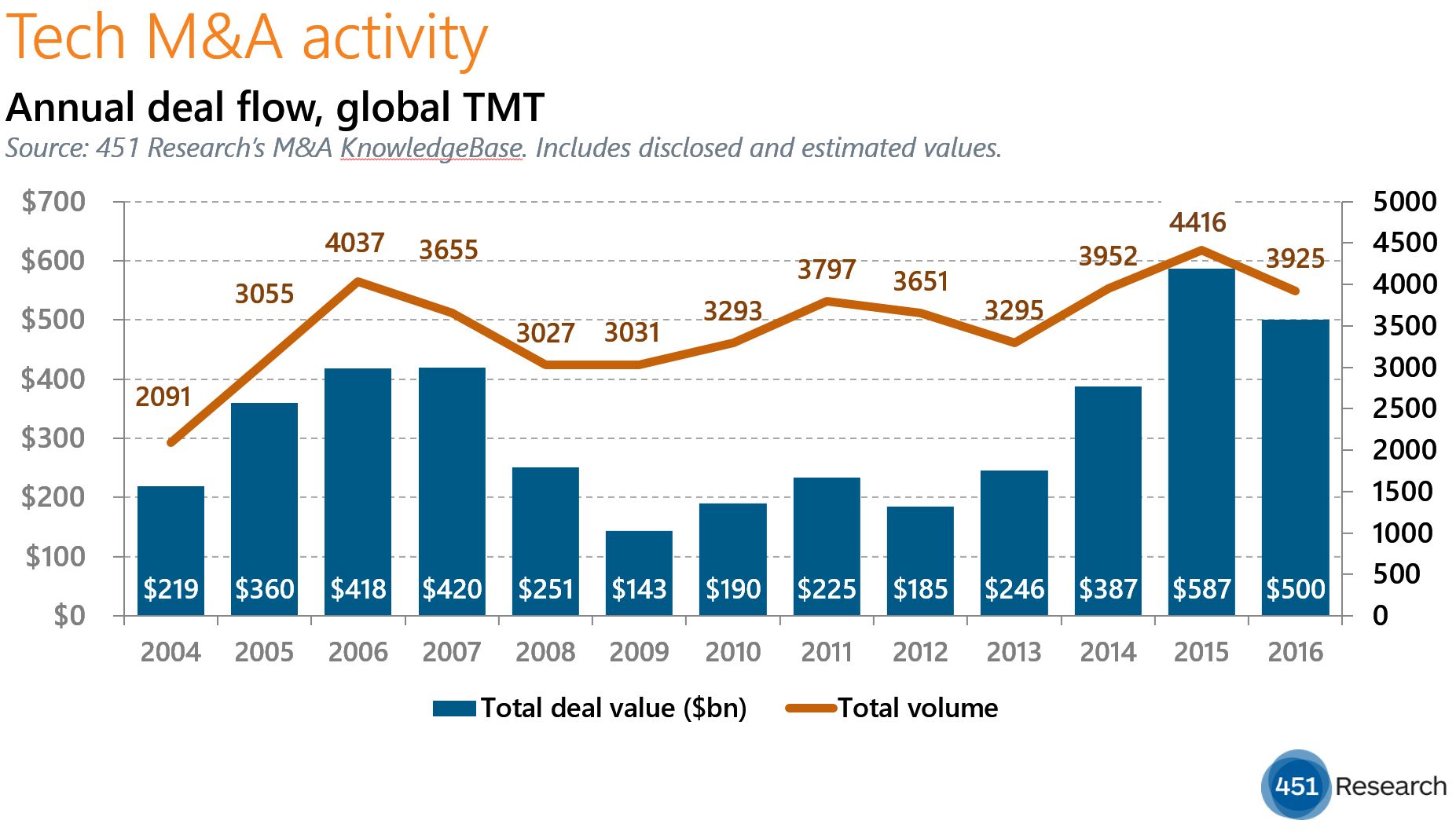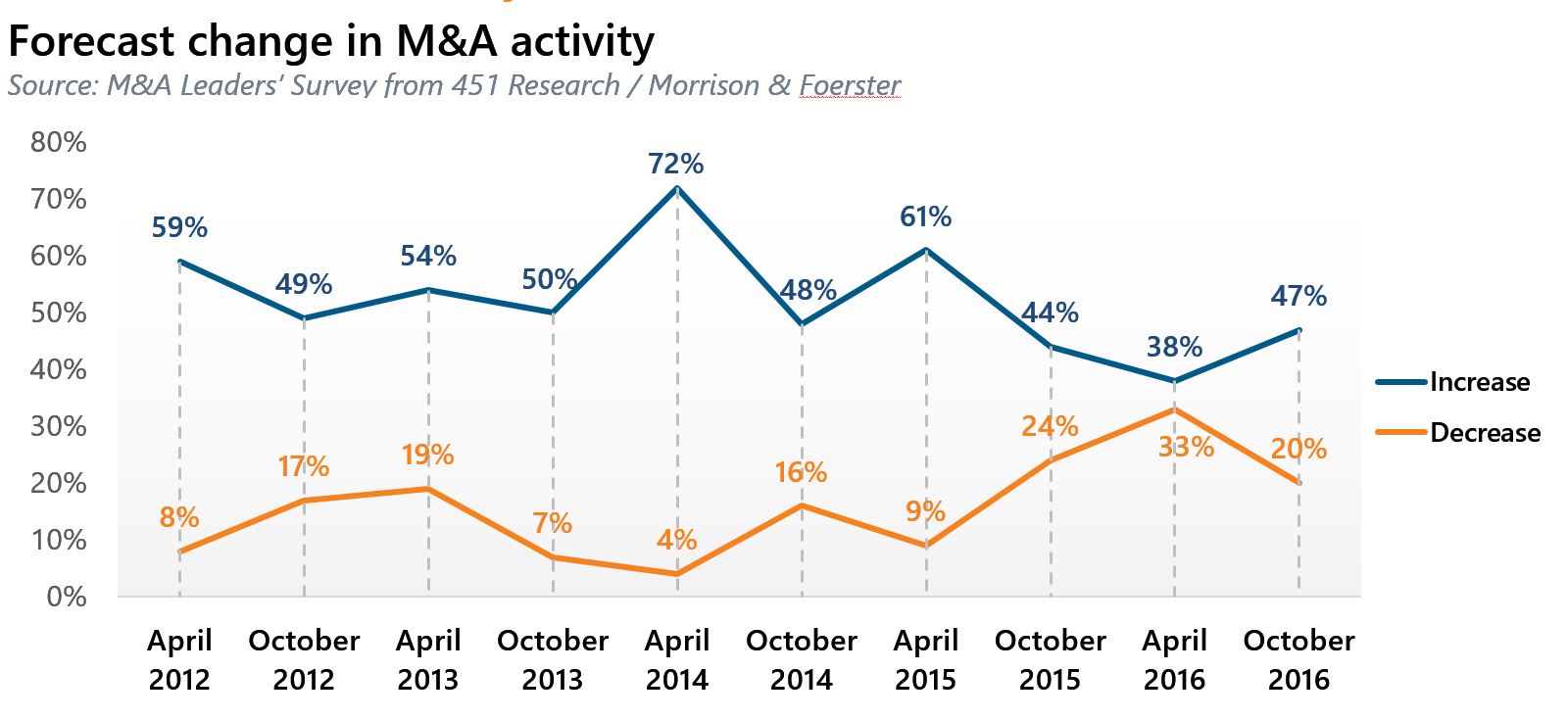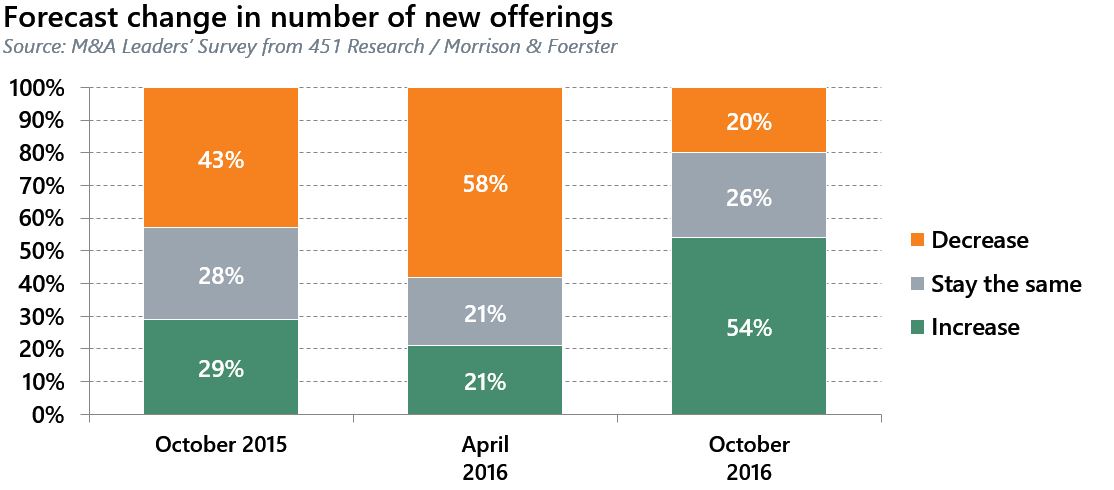Contact: Brenon Daly
After slumping sharply in the two months following the unexpected results of the US election, the number of tech acquisitions picked back up in January. M&A spending, however, didn’t follow suit. In the just-completed month, tech buyers around the globe announced 330 deals, with the aggregate value of those transactions totaling just $18bn, according to 451 Research’s M&A KnowledgeBase. January spending represents the lowest monthly level in two years, and just half the average monthly amount in 2016.
At the top end of the market, the M&A KnowledgeBase tallied just five deals valued at more than $1bn. That’s down from last year’s average of eight big-ticket transactions each month. Further, with one notable exception, the ‘three-comma deals’ so far this year have all gone off at below-market multiples. For instance, Keysight Technologies is paying just 3.2 times trailing sales for application testing vendor Ixia, which had been posting declining revenue. Clearlake Capital Group is paying an even lower multiple for LANDESK, owned by fellow buyout firm Thoma Bravo, according to our understanding.
A discount didn’t apply to last month’s largest transaction, Cisco’s reach for AppDynamics. The networking giant, which has been busily buying software vendors, paid an astounding 17.4x trailing sales for the application performance monitoring provider. (The $3.7bn deal marks the largest sale of a VC-backed company in three years.) Part of that rich valuation can be attributed to the fact that Cisco had to outbid the public market for AppDynamics, which was just a day away from setting the price of its planned IPO when Cisco announced the acquisition. Still, AppDynamics’ valuation is the highest multiple ever paid for a software firm with more than $50m in revenue, according to the M&A KnowledgeBase.
January’s deal volume, on the other hand, reversed two months of sharp declines to close 2016. The number of tech transactions in both November and December dropped to three-year lows, according to the M&A KnowledgeBase. Buyers last month included ServiceNow, Amazon Web Services and Oracle. Meanwhile, companies that double-dipped in the M&A market to start 2017 included Microsoft, Hewlett Packard Enterprise and the recently public Everbridge.
Recent tech M&A activity, monthly
|
Source: 451 Research’s M&A KnowledgeBase
For more real-time information on tech M&A, follow us on Twitter @451TechMnA.





